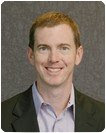The Ties that Bind
Last week I attended the MIT Emerging Technology Conference in order to listen in on the panel on cloud computing. The panel included participants from salesforce.com, Google, Amazon, as well as Mendel Rosenblum, the founder of VMware and a professor at Stanford University. The broad sentiment among the group was that cloud computing is an extension of the trend where network ubiquity and performance enables a transition of IT capability from fixed costs with a slow rate of change to variable costs and a rate of change that reflects true demand. Software as a service, platform as a service, and infrastructure as a service all qualify under this broad definition. Technology innovations such as rich browser interfaces, virtualization, and SOA are further hastening this trend.
Sitting at rPath, my favorite quote was one from Mendel Rosenblum regarding the changing role of the operating system in response to a question regarding the technological transformations that will follow these trends. Mendel's quote went something like this:
"An operating system is not very useful by itself. It needs to bind to something to provide value. Historically, you would bind the OS to hardware in order to expose the hardware to the applications. Now, with the widespread adoption of virtualization as the technology that binds to the hardware, the OS needs instead to bind to the application. Every time I say that you guys in the press claim I said the OS is going away. I'm not saying that. I'm just saying that it is going to change."
And this is what we have been saying at rPath for the past 3 years. When you bind an OS to the hardware in the legacy approach, the tie that binds is the OS installer that detects and loads drivers along with the utilities that are useful in managing the hardware lifecycle. When you bind an OS to an application to create a virtual machine, the tie that binds is technology that detects the needs of the application and loads the right JeOS (Just enough OS) elements while also bringing utilities that are useful in managing the application lifecycle. These are two very different approaches to operating system technology, and Mendel rightly points out that the future OS (and the related business model around the OS) will be different.
The great news is that this difference will further the move toward a more flexible datacenter - ultimately enabling seamless movement of application workloads across datacenters ala cloud computing. Binding the OS to the application as part of the application release process means that applications can be delivered to the infrastructure as a pre-defined, pre-tuned, coordinated set of virtual machines. Anyone with any experience with virtual machines knows that it is much easier to deploy a virtual machine (or a virtual appliance in the case of an application vendor) than to provision a new server and configure the application atop a new host OS. Metadata standards like OVF coupled with packaging innovations from companies such as rPath will free applications from the infrastructure and allow them to run in the clouds.
Needless to say, I was grinning ear to ear when I heard Mendel's comments. I hope they get repeated again and again.



0 Comments:
Post a Comment
<< Home